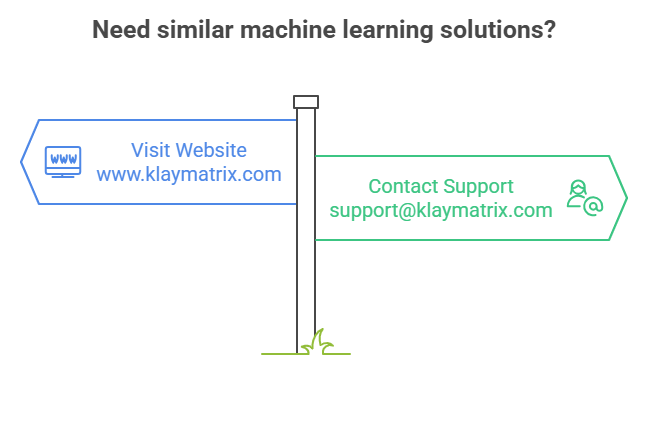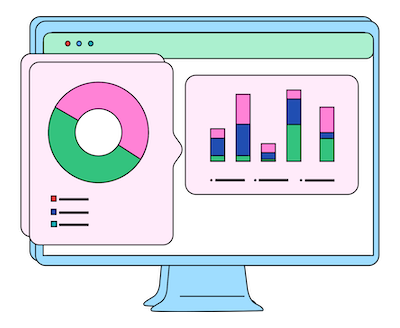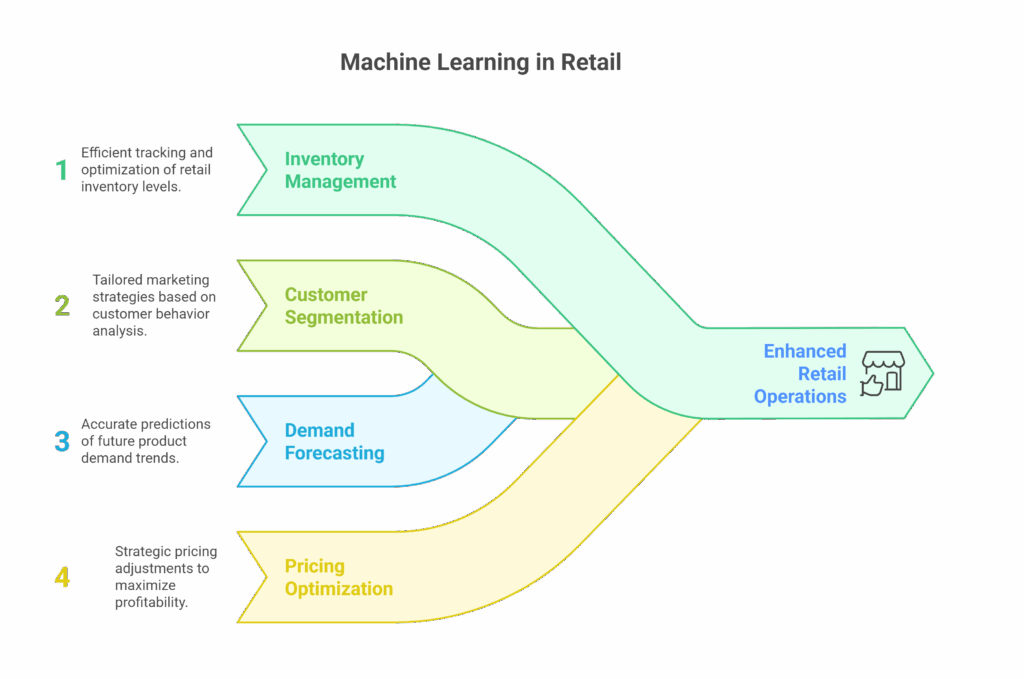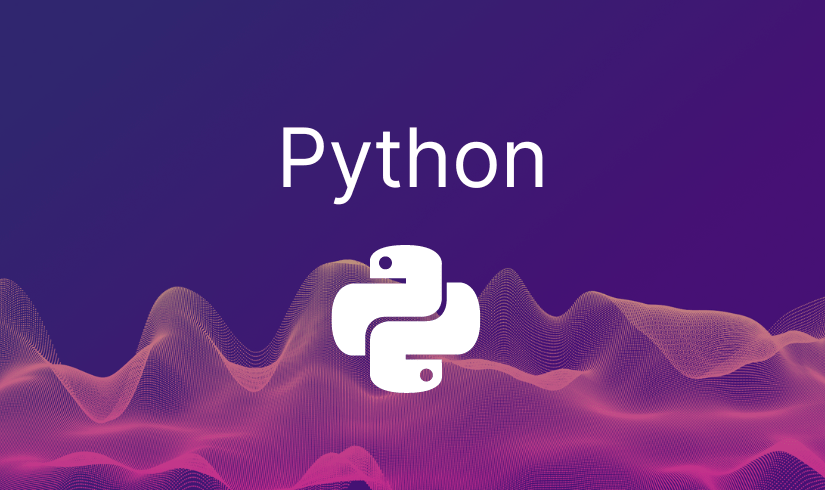No-Code Tools That Let You Build ML Models
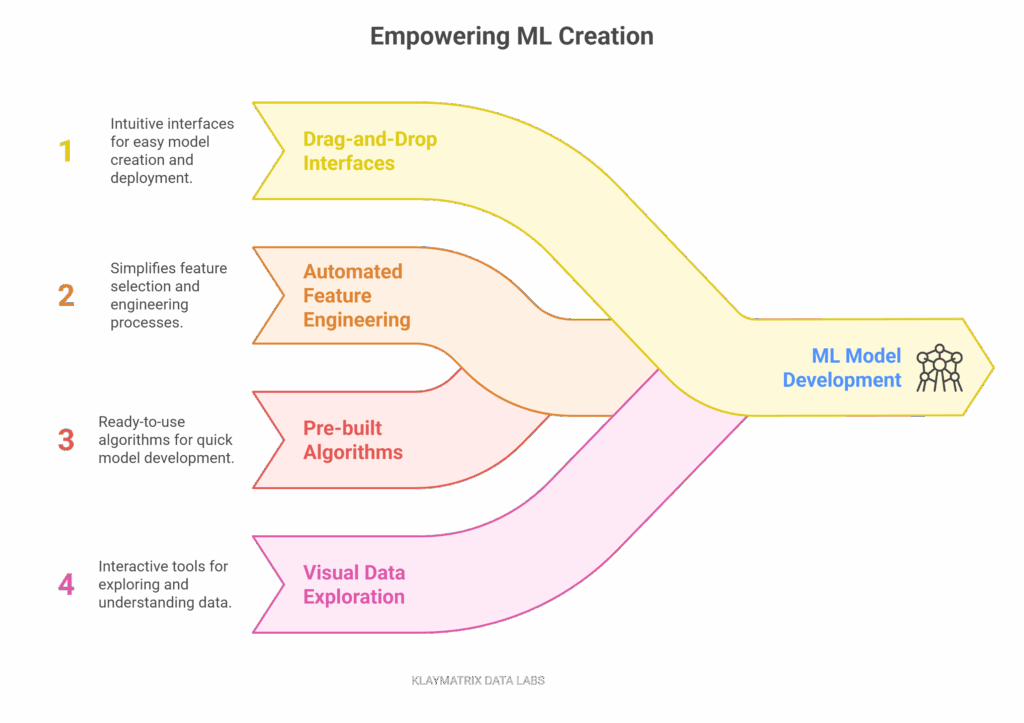
Introduction – Machine Learning Without Code? Yes, Really.
Machine learning sounds complex—and traditionally, it has been. You needed to know Python, understand algorithms, and write thousands of lines of code. But that’s changing.
Today, no-code tools let anyone—from business users to marketers—build and deploy machine learning models using simple drag-and-drop interfaces.
This blog explores the most accessible no-code ML tools and how you can start experimenting with predictions, trends, and data insights—all without writing a single line of code.
1) Why No-Code ML Matters
Accessibility: No-code tools bring ML to non-developers.
Speed: You can go from data to prediction in minutes.
Collaboration: Business teams and data teams can work together more effectively.
Innovation: More people can explore data ideas, leading to better insights.
You don’t need to become a data scientist—you just need curiosity and clean data.
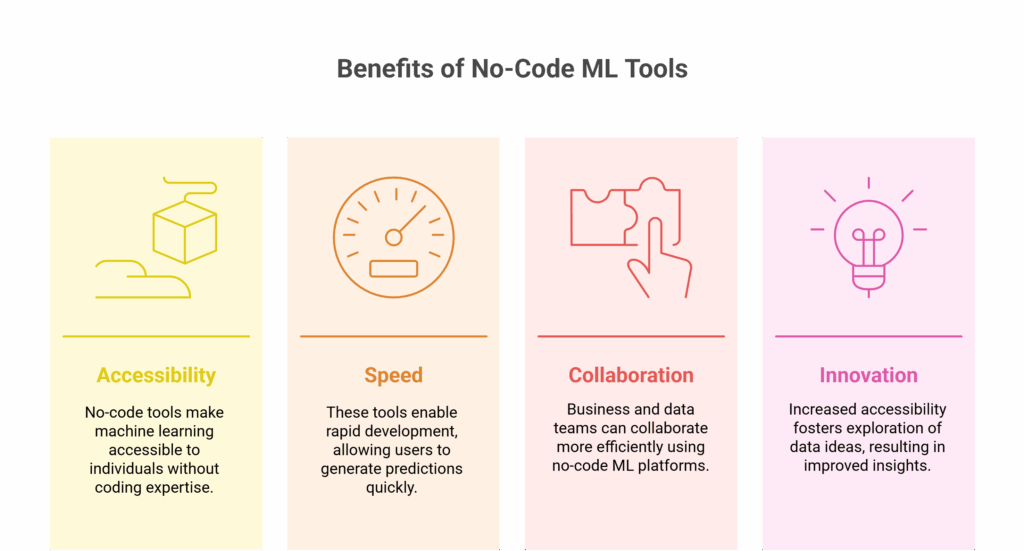
Example Use Case – Predict Customer Churn in Minutes
Let’s say you want to find out which customers are likely to stop buying your service. Here’s how you might do it in a no-code tool:
Upload Data: Add past customer behavior, purchases, and support logs.
Select Target: Choose “Will they churn?” as your prediction goal.
Auto-Train: Let the tool test different models behind the scenes.
See Predictions: Review customers at high risk.
Take Action: Send offers or alerts to retain them.
2) How to Choose the Right Tool
Ask these questions:
What type of data do you have (structured, unstructured)?
Do you need predictions, classifications, clustering?
Do you want cloud-based or on-premise?
How easy is it to integrate with your existing tools (like Excel, CRM, BI dashboards)?
Most tools offer free trials—so test and see what works best.
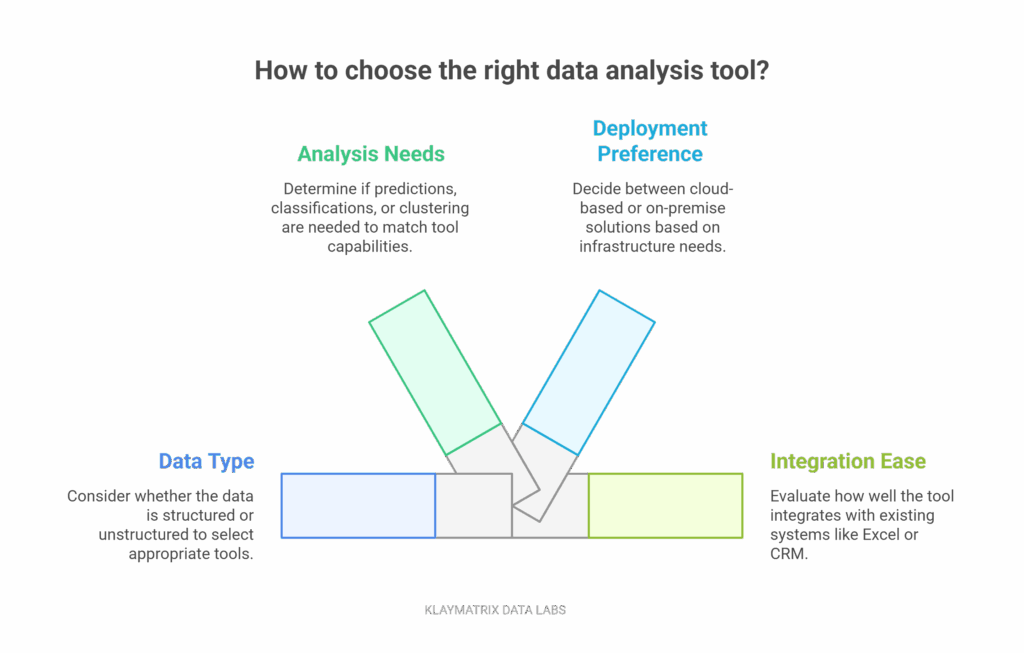
3) Getting Started with No-Code ML
Pick a small problem (like sales prediction)
Collect historical data (clean and labeled)
Choose a no-code tool (Power BI, Obviously AI, etc.)
Explore and experiment
Share your results with stakeholders
You don’t need to wait for your IT team to run every model. Start small, and build confidence.
4) Common Use Cases You Can Try
Sales: Forecast next month’s numbers
HR: Predict employee attrition
Marketing: Personalize campaigns
Operations: Optimize inventory levels
Customer Success: Predict churn and act early
The key is not in how complex the tool is—but how meaningful your question is.
Limitations to Be Aware Of
No-code is powerful, but not magic:
Less control over model internals
Risk of misinterpreting results if data is poor
Advanced use cases may still require expert involvement
But for 70–80% of business problems, no-code ML can give you quick wins.
Real-World Success Stories
Retail brands used no-code ML to forecast footfall and manage staff shifts.
Ed-tech firms predicted student dropout rates using no-code models.
Banks used drag-and-drop ML tools to score loan applications.
It’s not about the tool—it’s about what you ask it to do.
5) Power BI + AI Visuals = Hidden Insights
Microsoft Power BI includes AI visuals like:
Key Influencers: Tells you what affects an outcome (e.g., why sales are dropping).
Decomposition Tree: Breaks down KPIs.
Q&A Visual: Type questions like “What’s the average profit by category?” and get an instant chart.
No need for models—Power BI does the thinking for you.
6) Google AutoML in Action – A Simple Flow
Upload your dataset (e.g., product reviews)
Label what you want (positive/negative sentiment)
AutoML trains and tests different models
You deploy the best one with a click
Use it for image recognition, text classification, tabular predictions—all via Google Cloud’s easy UI.
Hands-On Example – Using Obviously AI to Predict Sales
Step 1: Upload a CSV (e.g., last year’s sales data)
Step 2: Choose what you want to predict (e.g., “Sales Next Month”)
Step 3: Click “Run Prediction”
Step 4: Get a chart and downloadable report
Done in less than 10 minutes!
7) Real vs. Hype – What No-Code ML Can and Can’t Do
It can:
Find patterns in past data
Make predictions on new data
Help with decision-making
It can’t:
Think creatively
Fix bad data
Replace human strategy
Machine Learning is a tool, not a mind.
8) How No-Code Tools Are Used in E-Commerce
Predict which product will sell more
Personalize offers for each shopper
Manage stock with demand forecasting
Detect fraud in orders
Small Shopify or WooCommerce stores can now compete with giants—thanks to no-code ML.
Common Mistakes to Avoid
Using dirty data (missing values, typos)
Predicting the obvious (e.g., “sales increase in December”)
Ignoring the business question
Blindly trusting the model
Always validate predictions against real-life logic.
9) ML Buzzwords Explained (in Simple Terms)
Model = A machine’s brain built from past data
Features = Input data columns (e.g., age, salary)
Target = What you want to predict
Accuracy = How often it’s right
Overfitting = When your model knows too much and performs badly on new data
You don’t need to code—but a little vocabulary helps!
10) From Excel to Machine Learning
Have Excel skills? You’re already halfway there.
Clean your data
Use Power BI or Google Sheets integrations
Export and test in tools like BigML or Obviously AI
Build reports around predictions
Think of it as Excel with superpowers.
11) Automating Business Workflows with No-Code ML
Examples:
Auto-send email if customer is likely to churn
Alert ops team if forecasted demand > stock
Flag high-risk loans before approval
Combine no-code ML + automation tools like Zapier or Power Automate.
12) What Makes a Good ML Dataset?
Your dataset should:
Have enough rows (more = better)
Include relevant columns (like price, age, region)
Be clean (no missing values or wrong data types)
Be labeled (if you’re doing predictions)
Garbage in = garbage out. Clean data is 80% of the job.
13) Success Story – Predicting Student Dropout in EdTech
An online learning platform used no-code ML to:
Upload attendance + activity data
Predict which students might quit early
Send proactive nudges (email/SMS)
Improve completion rate by 35%
ML isn’t just for finance—it’s for people.
14) What’s the Cost of These Tools?
Power BI: Free (Desktop), Pro ₹750/month
Obviously AI: Starts ~$100/month
BigML: Free tier, then pay-as-you-go
DataRobot: Enterprise pricing (contact sales)
Google AutoML: Charges based on training time
SageMaker Canvas: Pay-per-use (AWS pricing)
Start free. Scale when ready.
15) What’s Next in No-Code ML?
More AI copilots for suggestions
Seamless integration with CRMs, ERPs
Multilingual support
Augmented Decision-Making with Explainable AI
You won’t just use machine learning—you’ll collaborate with it.
Final Thoughts – ML is for Everyone Now
You no longer need a PhD to make use of machine learning. With the right no-code tools, business users can:
Make smarter, data-driven decisions
Save hours with automation
Create predictive models with ease
Start with a question. Bring your data. Let the tools handle the rest.
The future isn’t just AI-powered—it’s AI-empowered for everyone.
